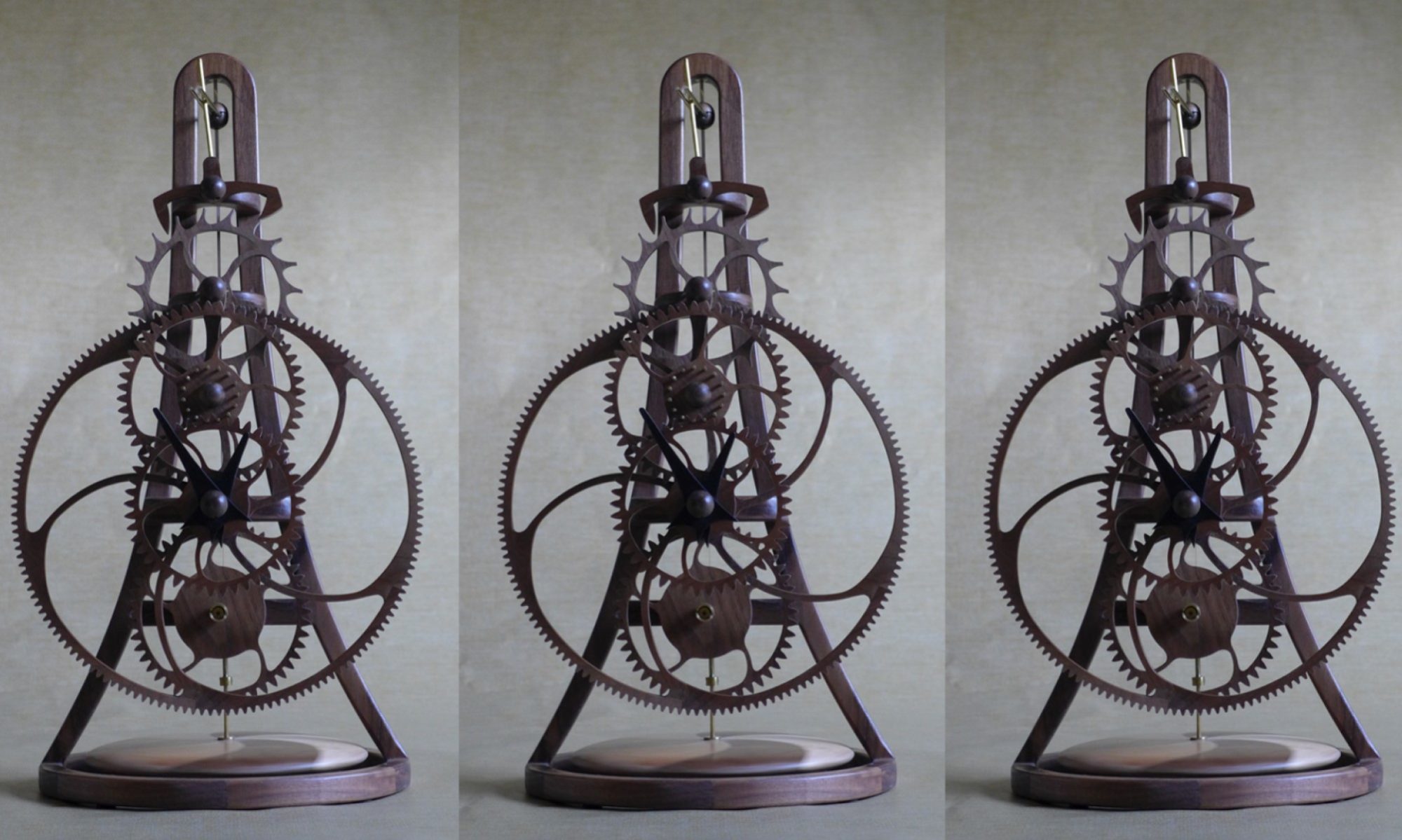After a day of lathe work, the clock (as is) is hanging on the wall.

It is amazing how much better the lathe is running after yesterday’s adjustments and I turned all the brass parts that attach the clock frame to the wall with no problems.
When I designed these parts I was very conscience of an experience from about 40 years ago when I built some shelves for my first house (built in ~1815) in Derby, England. The shelves were to be located in the corner of my bedroom and I worked hard to ensure that they were square, all the corners were right angles. I was very happy with the results until I tried to hang it on the wall only to find that there was a large ugly gap between the shelves and the wall. The shelves were square but the corner of the room was not quite a right angle and I had not thought to check before I started. On this clock the torsional pendulum spring runs very close to the clock frame and the clock will not run if the spring touches the frame. If the wall the clock is hung on is vertically this will not be a problem. Remembering my house in Derby, there is no guarantee that the wall will be vertical and I need to include provision to adjust the clock hanger to accommodate an imperfect wall.
Below are a series of photos showing the attachment of the clock to the wall.



To compensated for a non-vertical wall, the distance of the top of the clock from the wall can be adjusted by changing how far the collar is threaded on to the brass rod.

Brass insert at top of the clock frame. A threaded hole in the side of the insert accommodates the locking set screw that seats in to the groove on the collar.


I can’t put off cutting and polishing the remaining pinion rods much longer, so that is my plan for tomorrow… but I could cut the clock hands.

